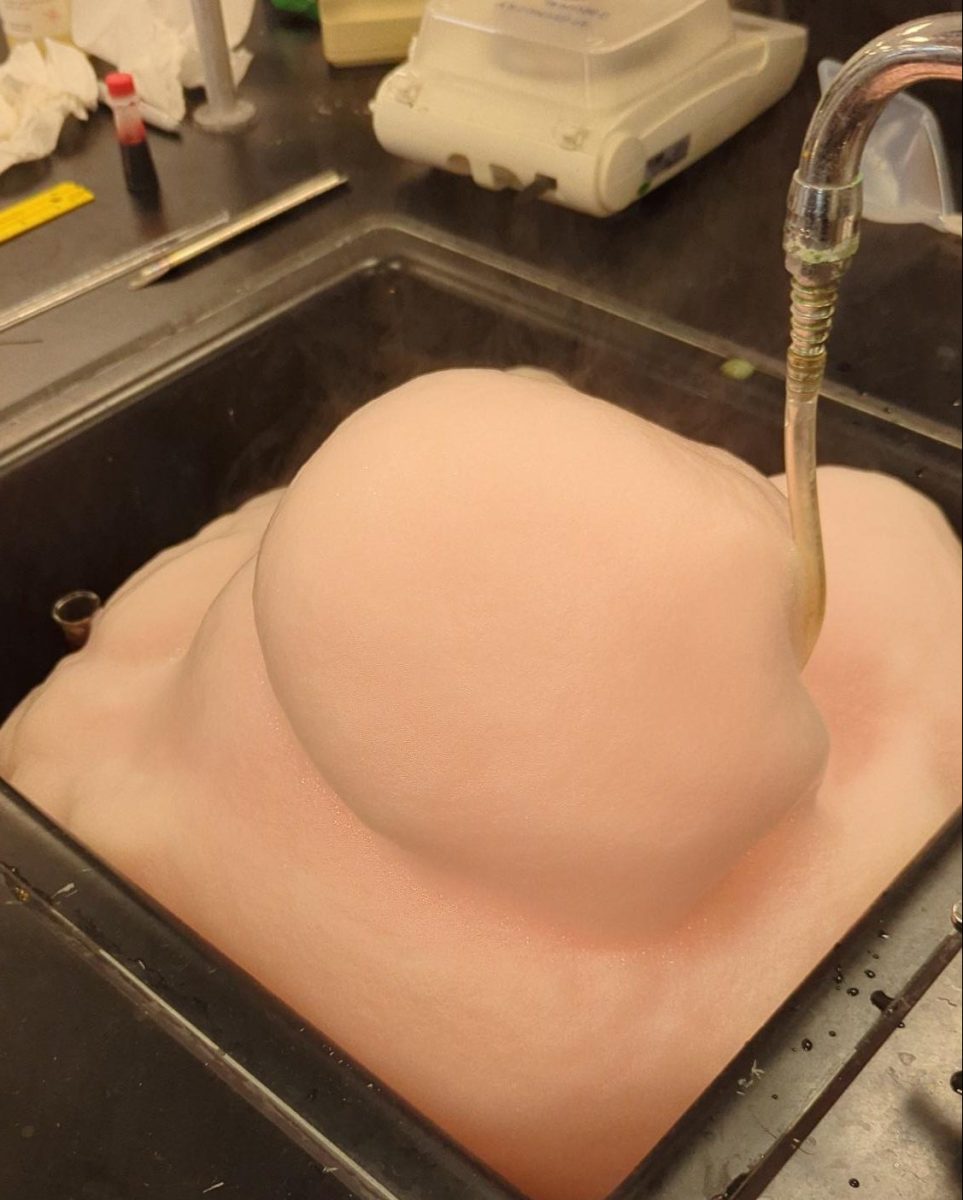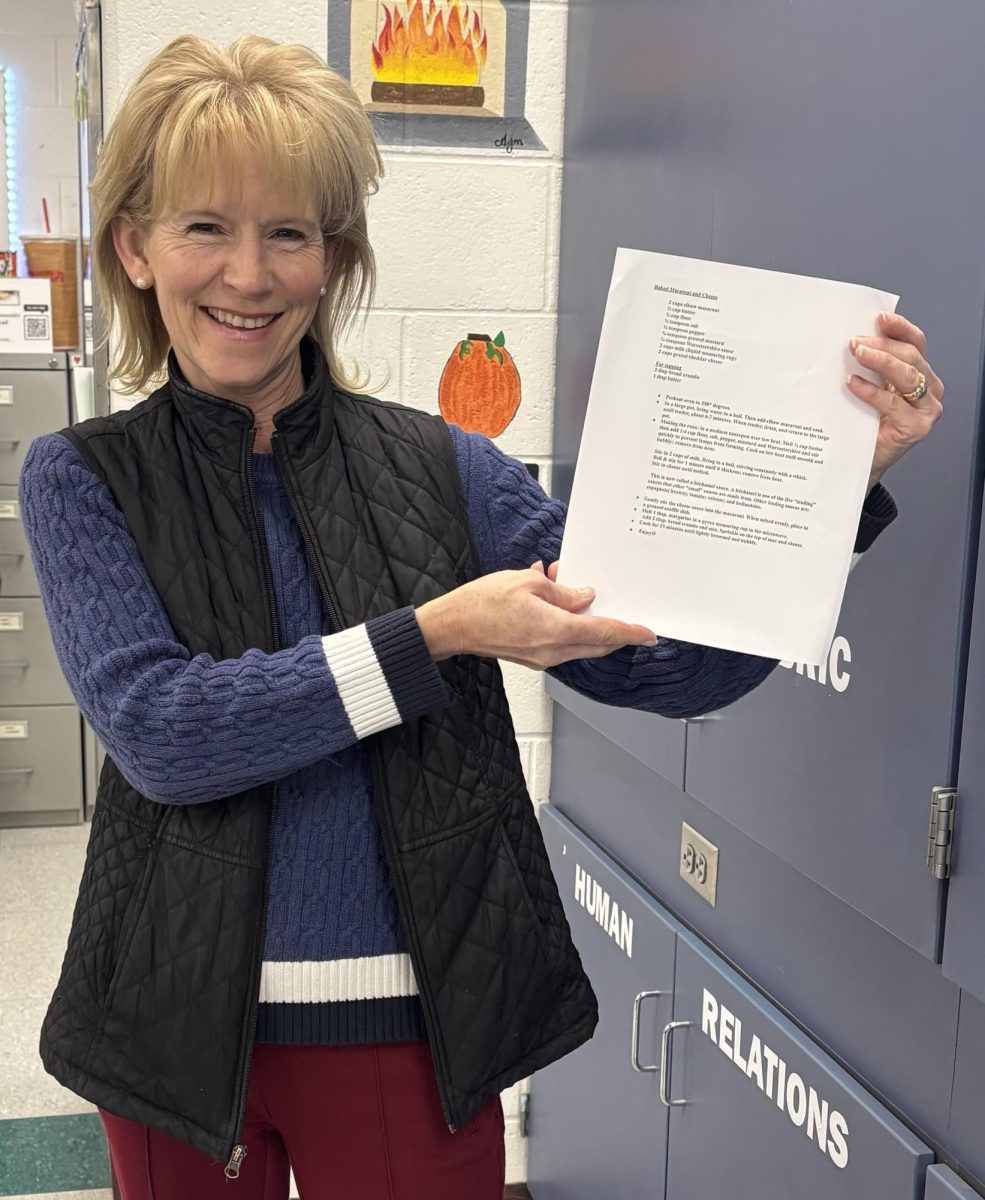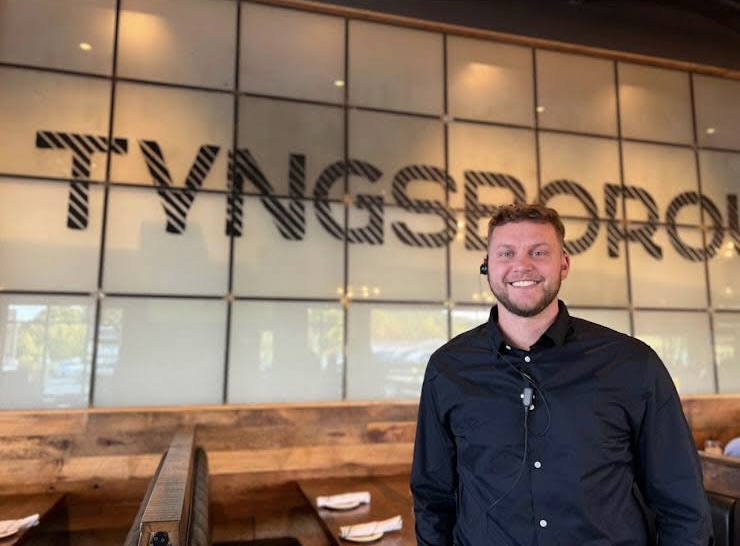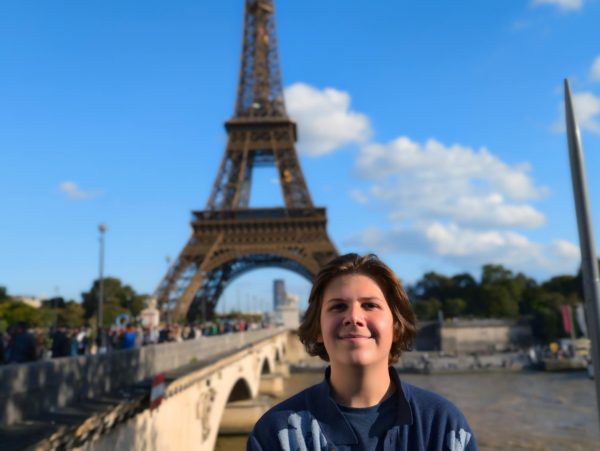One of the most critical and influential sciences is now an extracurricular activity at HB. Chemistry Club, or Chem Club, pioneered by AP Chemistry student Angelina Costa ’25 and advised by instructor Adam Knedeisen, plans to meet every other Tuesday in Room 371.
The exigence that inspired the club’s creation was the discovery of a “Chemistry Club” box in one of the rooms, signifying that a club like this had already existed. Costa brought the club back to life. “I always really liked chemistry and I thought it would be good to have a space to explore chemistry without worrying about the grades,” said Costa.
The first students to join the club came from the 6th-period AP Chemistry class, composed of only nine students. “I like doing chemistry. I’m a huge fan of chemistry and I want to major in it,” said club member Rowan Cassily ’24.
The first experiment conducted was a simple Elephant Toothpaste trial. In this reaction, the hydrogen peroxide, which usually breaks down over a long period, is added to a catalyst, the sodium iodide. When the two meet, the decomposition of hydrogen peroxide into water and oxygen gas bubbles up with the dish soap, creating the iconic foam.
First, the team had to dilute the sodium iodide in distilled water so that the reaction would happen with a liquid. Then, the other reactants were measured out carefully: 10 mL of hydrogen peroxide, dish soap and a few drops of food coloring. All those reactants were quantitatively added to a test tube and quickly stirred. Finally, 5 mL of the sodium iodide solution was dropped, and the reaction began.
The first time the club tried to conduct this experiment, it yielded poor results. “We hit a roadblock in the first trial when the sodium iodide didn’t react with the hydrogen peroxide,” said Costa. The sodium iodide was expired and therefore wouldn’t expedite the decomposition, resulting in a sad putter of foam.
After searching for a new container of sodium iodide, the preparation was reset and the students diluted the iodide again. After adding a few drops, the new sodium iodide quickly responded with the hydrogen peroxide and completed the reaction. The foam bubbled over the brim of the tube and mimicked an erupting volcano.
After this success, the team quickly gathered a larger 150 mL flask to create a bigger reaction. They scaled all the ingredients five times and finished all the setup. This time, the bubbles rose to the top of the sink and looked great.
“I thought it would be a fun supplement to my coursework, doing the labs without doing the lab [reports],” said Anuhya Chilakapati ’25, also enrolled in AP Chemistry.
As it neared 3:30, they began to clean up the lab area. Costa explained her plans for future chem club meetings. “For the next experiment I want to alter the Honors Chemistry flame lab and do it with cooler elements, compounds, and salts,” said Costa. “I want to have a good group of people who care about chemistry and are excited to see what different experiments we can conduct,” she continued, “in the winter months I’d like to do a borax snowflake experiment.”
After this inaugural meeting, the Chem Club plans to meet every other Tuesday at 2:30.







![Dr. Barry teaches his son Benin karate as part of a class he provides for school-aged children across Brookline. “I happen to have [karate classes] thrown into the mix of what I do here, because it’s something that I have to offer,” he says. “I enjoy it, I can do it, and I can offer it freely.” (Courtesy Brian Barry)](https://cavchronline.com/wp-content/uploads/2025/04/Man-of-Many-Talents-Brian-Barrys-Service-to-Brookline.jpg)

